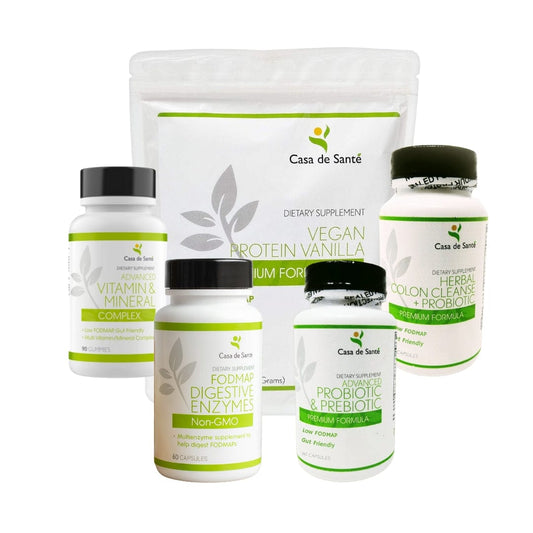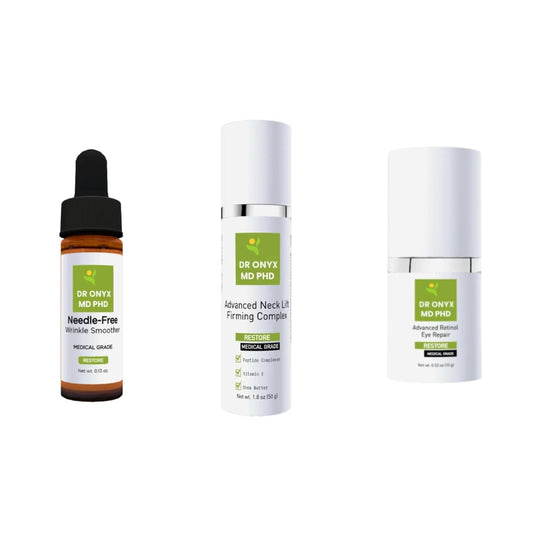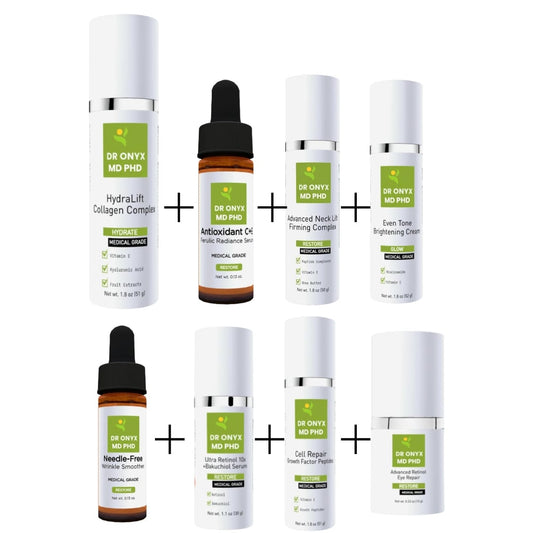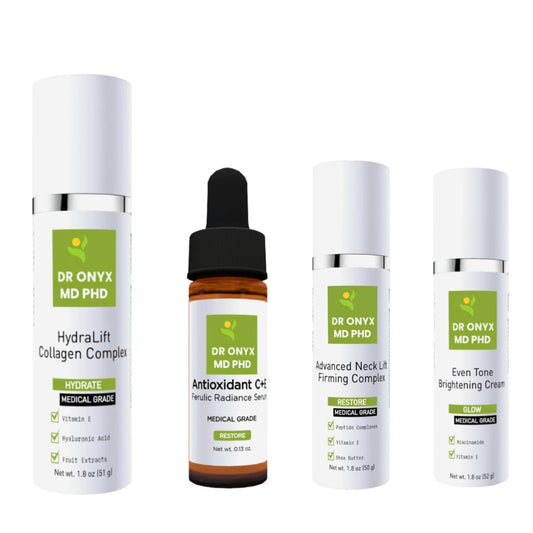Comprehensive Semaglutide and B12 Dosage Chart: A Patient's Guide
Managing weight loss and metabolic health often requires a multifaceted approach, with medications like semaglutide and supplements such as vitamin B12 playing increasingly important roles in treatment plans. Whether you're just starting on semaglutide therapy or looking to optimize your B12 supplementation, understanding proper dosing is crucial for safety and effectiveness. This comprehensive guide breaks down everything patients need to know about dosing these two important compounds.
Understanding Semaglutide: The Basics
Semaglutide has revolutionized weight management and diabetes treatment since its FDA approval. Originally marketed under brand names like Ozempic, Wegovy, and Rybelsus, this GLP-1 receptor agonist works by mimicking a hormone that targets areas of the brain involved in appetite regulation and food intake. The result? Reduced hunger, increased feelings of fullness, and for many patients, significant weight loss.
Beyond weight management, semaglutide helps improve glycemic control in type 2 diabetes by stimulating insulin secretion when blood glucose levels are high. This dual action makes it particularly valuable for patients struggling with both weight and blood sugar management.
How Semaglutide Works in Your Body
Semaglutide functions by binding to GLP-1 receptors throughout your body, primarily in your pancreas and brain. When activated in the pancreas, these receptors trigger insulin release when blood sugar rises, helping to normalize glucose levels. In the brain, particularly the hypothalamus, semaglutide activation reduces appetite signals and increases satiety hormones, leading to reduced food intake.
What makes semaglutide particularly effective is its extended half-life of approximately 168 hours (one week), allowing for once-weekly dosing in injectable formulations. This represents a significant advantage over earlier GLP-1 medications that required daily administration.
Available Forms and Formulations
Semaglutide comes in multiple formulations to suit different patient needs. The injectable forms (Ozempic and Wegovy) are administered once weekly via subcutaneous injection, typically in the abdomen, thigh, or upper arm. Rybelsus offers an oral alternative, taken once daily on an empty stomach with a small sip of water (no more than 4 ounces), at least 30 minutes before the first food, beverage, or other oral medications of the day.
Compounded versions of semaglutide have also become available through specialty pharmacies, sometimes combined with other compounds like vitamin B12. These formulations vary in concentration and should only be used under medical supervision with clear dosing instructions from your healthcare provider.
Semaglutide Dosage Chart
Proper dosing of semaglutide follows a gradual titration schedule to minimize gastrointestinal side effects while maximizing therapeutic benefits. Your healthcare provider will determine the appropriate starting dose and escalation schedule based on your specific health needs, weight, and whether you're using it for diabetes management, weight loss, or both.
Standard Dosing for Weight Management (Wegovy)
For patients using Wegovy (semaglutide) specifically for weight management, the following titration schedule is typically recommended:
- Weeks 1-4: 0.25 mg once weekly (initial dose)
- Weeks 5-8: 0.5 mg once weekly
- Weeks 9-12: 1.0 mg once weekly
- Weeks 13-16: 1.7 mg once weekly
- Week 17 and onward: 2.4 mg once weekly (maintenance dose)
This gradual increase allows your body to adjust to the medication, reducing the likelihood and severity of side effects like nausea, vomiting, and diarrhea. If you experience significant side effects at any dose, your provider may recommend extending the time at that dose before increasing further.
Dosing for Type 2 Diabetes (Ozempic)
For patients with type 2 diabetes using Ozempic, the dosing schedule differs slightly:
- Weeks 1-4: 0.25 mg once weekly (initial dose, not therapeutic for glycemic control)
- Weeks 5 and onward: 0.5 mg once weekly (starting therapeutic dose)
- If additional glycemic control is needed after at least 4 weeks: May increase to 1.0 mg once weekly
- Maximum dose: 2.0 mg once weekly (in some cases for enhanced glycemic control)
Blood glucose monitoring is essential during dose adjustments to ensure optimal glycemic control. Your healthcare provider may adjust your other diabetes medications to prevent hypoglycemia as semaglutide takes effect.
Oral Semaglutide (Rybelsus) Dosing
For patients taking the oral formulation Rybelsus, the dosing schedule is:
- Month 1: 3 mg once daily
- Month 2: 7 mg once daily
- Month 3 and onward: 14 mg once daily (if needed for glycemic control)
Proper administration is crucial for Rybelsus absorption. Take it first thing in the morning, at least 30 minutes before eating, drinking, or taking other oral medications, with no more than 4 ounces of plain water. Failing to follow these instructions can significantly reduce the medication's effectiveness.
Vitamin B12: An Essential Companion
Vitamin B12 (cobalamin) is a water-soluble vitamin that plays critical roles in nerve function, DNA synthesis, red blood cell formation, and energy metabolism. Many patients on semaglutide therapy also receive B12 supplementation, either separately or in combined formulations, for several important reasons.
Why B12 Matters for Semaglutide Users
Weight loss medications like semaglutide can potentially impact nutrient absorption and dietary intake. As patients consume fewer calories, they may inadvertently reduce their intake of essential nutrients, including B12. Additionally, some research suggests that medications affecting the GI tract may influence B12 absorption over time.
B12 deficiency can manifest as fatigue, weakness, constipation, loss of appetite, and neurological changes like numbness and tingling in the hands and feet. These symptoms could potentially overlap with or be mistaken for side effects of semaglutide therapy, making proactive supplementation a prudent approach for many patients.
Furthermore, adequate B12 levels support energy metabolism, potentially helping patients maintain energy levels during caloric restriction and weight loss. This makes B12 a logical companion to semaglutide therapy for many individuals.
B12 Dosage Recommendations
Vitamin B12 supplementation dosages vary based on whether you're preventing deficiency or treating an existing deficiency. For adults on weight management programs using semaglutide, typical preventative dosing ranges include:
- Oral supplements: 500-1000 mcg daily
- Sublingual (under the tongue): 500-2500 mcg daily
- Injectable (typically administered by healthcare providers): 1000 mcg weekly or monthly
For patients with confirmed B12 deficiency, higher doses or more frequent administration may be necessary, particularly in the initial treatment phase. Your healthcare provider will determine the appropriate dosage and route based on your B12 levels, overall health, and specific needs.
Combined Semaglutide and B12 Formulations
Some compounding pharmacies now offer formulations that combine semaglutide with vitamin B12 in a single injection. These combination products aim to provide the benefits of both compounds while simplifying the administration process for patients.
Typical Combination Dosages
In combined formulations, the semaglutide component typically follows the standard titration schedule, while the B12 component remains consistent. Common combinations include:
- Starter dose: Semaglutide 0.25 mg + B12 1000 mcg
- Intermediate dose: Semaglutide 0.5 mg + B12 1000 mcg
- Standard dose: Semaglutide 1.0 mg + B12 1000 mcg
- Higher dose: Semaglutide 1.7 mg + B12 1000 mcg
- Maximum dose: Semaglutide 2.4 mg + B12 1000 mcg
These combinations are typically administered once weekly via subcutaneous injection. The semaglutide component follows the same gradual titration schedule as standalone semaglutide, while providing consistent B12 supplementation throughout the treatment course.
Monitoring and Adjusting Your Treatment
Successful treatment with semaglutide and B12 requires ongoing monitoring and occasional adjustments. Working closely with your healthcare provider ensures you receive the optimal benefit from your medication regimen while minimizing potential side effects.
Key Metrics to Track
During semaglutide therapy, your healthcare provider will typically monitor several important parameters:
- Weight changes and body composition
- Blood glucose levels (particularly for patients with diabetes)
- Blood pressure and heart rate
- Gastrointestinal symptoms and tolerance
- Vitamin B12 levels (periodically)
- Kidney function
- Pancreatic enzymes
Tracking these metrics helps ensure your treatment remains safe and effective. Many patients find it helpful to maintain a symptom journal during the early weeks of treatment to document side effects, which can help guide dosage adjustments.
When to Adjust Your Dosage
Several scenarios might warrant adjustments to your semaglutide or B12 dosing:
For semaglutide, dose adjustments might be needed if you experience persistent or severe gastrointestinal side effects, inadequate weight loss or glycemic control, or if you reach a plateau in your treatment goals. Never adjust your semaglutide dose without consulting your healthcare provider.
For B12, dosage adjustments might be recommended based on blood test results showing insufficient improvement in B12 levels, or if you develop symptoms suggesting continued deficiency despite supplementation. Your provider might increase your dose or change the administration route (e.g., from oral to injectable) if absorption issues are suspected.
Conclusion
Semaglutide and vitamin B12 represent important tools in the management of weight and metabolic health. Understanding proper dosing for both compounds helps ensure you receive maximum benefit while minimizing potential side effects. The dosage charts and guidelines provided here offer a general framework, but remember that individualized treatment under medical supervision remains the gold standard.
Always follow your healthcare provider's specific instructions regarding dosage, administration, and monitoring. With proper use and regular medical oversight, these compounds can be valuable components of your health management strategy, potentially improving both quality of life and long-term health outcomes.

















